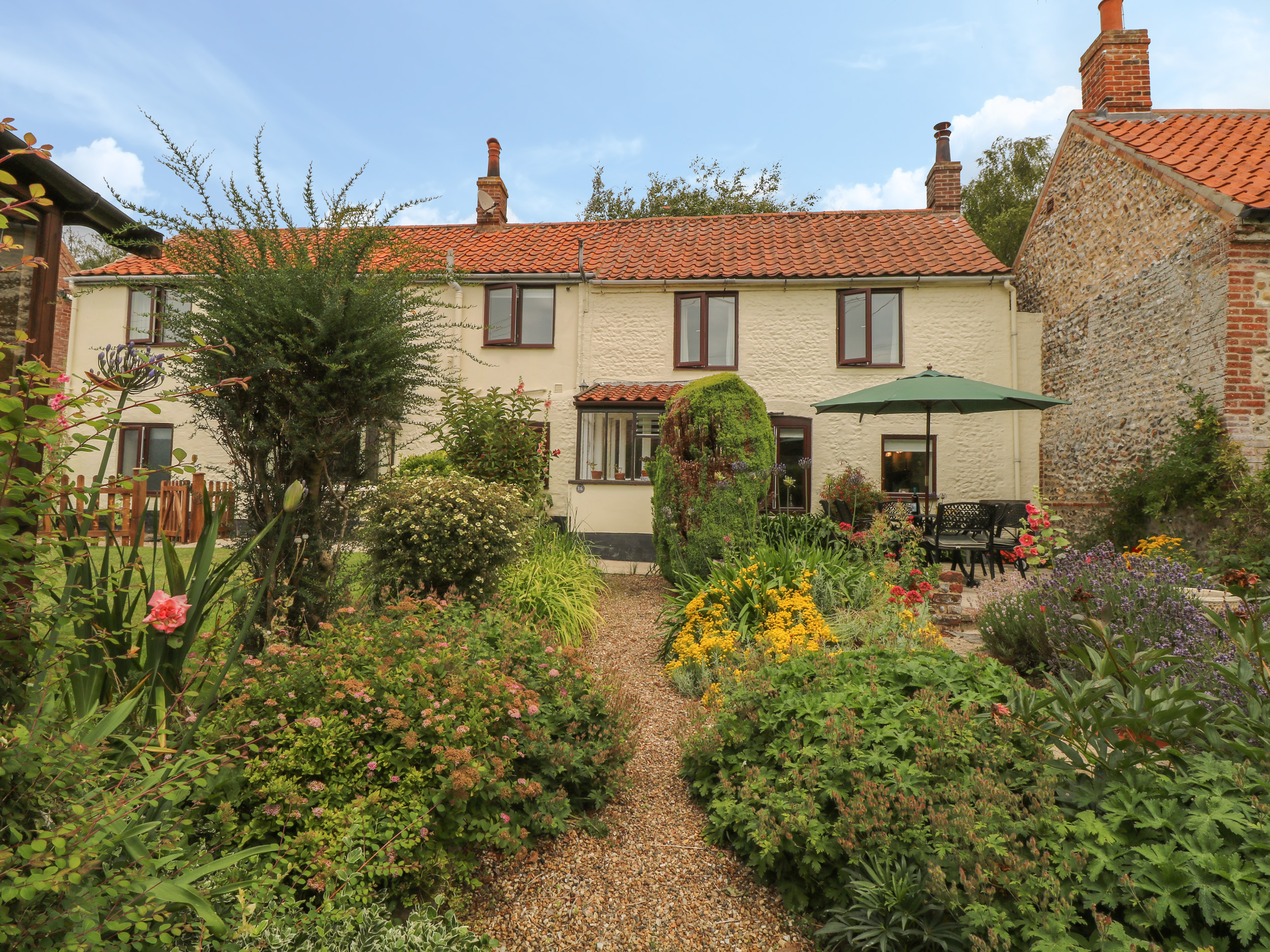Weeting Castle
Hidden away in the Norfolk countryside near Thetford is the fascinating ruin of Weeting Castle. To discover a late twelfth century manor in England is quite a rare thing, so if you're visiting other historical sites in the area, it's worth to make the time to find this isolated gem. We were having one of our Norfolk days out and were visiting Grimes Graves and Weeting Castle before taking a walk in Wells-next-the-Sea on the coast.
You find the castle down a narrow lane on the outskirts of Weeting, next to the church of St. Mary the Virgin. There is a small car parking area near the church and a footpath up to the castle site. Weeting Castle is free to enter and open during day light hours. For more information on events and opening times please refer to the English Heritage website.
 The Ruins of Weeting Castle © essentially-england.com
The Ruins of Weeting Castle © essentially-england.com
History of Weeting Castle
Weeting Castle was built by Hugh de Plays about 1180, shortly after the end of the Norman period in England. Although it is called a castle it was never fortified and was just a grand manor house that the de Plais family used to show off their wealth. The design is thought to be a copy of a building in the outer bailey of the Earl of Surrey’s Norfolk stronghold at Castle Acre.
The castle consisted of a service block containing a pantry, buttery, and food preparation area with an entrance to the great hall, an impressive, large room rising to a high wooden roof. Here, the owners would have entertained guests and dealt with business.
Furniture and furnishings moved as needed. At mealtimes, retainers and guests sat on long benches and dined off trestle tables, while the family and any highborn guests sat on the dais at the high table. And while at night, everyone bedded down in the hall, the family had their private quarters in a three-storey chamber block behind the great hall. It even had a garderobe - the medieval version of an indoor loo.
Due to the risk of fire, the kitchens were in a free-standing building away from the main dwelling.
 Artist's Impression of Weeting Castle Around the 1350's (Photo taken of English Heritage Information Board) © essentially-england.com
Artist's Impression of Weeting Castle Around the 1350's (Photo taken of English Heritage Information Board) © essentially-england.comThe de Plais family lived in Weeting Castle until the late fourteenth century, by which time they had constructed a rectangular moat around the building. Again, the moat was not a defensive structure, but another statement to demonstrate their wealth and power.
When Sir John Howard, the Earl of Norfolk, married Margret de Plais, the estate passed to him. In the years following, it was abandoned and fell into ruin.
 Weeting Castle Hall © essentially-england.com
Weeting Castle Hall © essentially-england.com Chamber and Garderobe © essentially-england.com
Chamber and Garderobe © essentially-england.comWeeting Castle got a second chance at life during the eighteenth century when Weeting Hall was built. Sitting at the heart of an extensive estate of over 5000 cares, Weeting Hall needed landscaping that reflected its status as a stately home, and the abandoned remains of Weeting castle became centre of attention again as a romantic ruin or folly.
Next to the moat - which would freeze during the winter months - the new owners built an ice house to collect and store ice for food preservation. It’s the only surviving part of the Hall which was demolished in the mid-twentieth century.
 Weeting Castle Ice House and Moat © essentially-england.com
Weeting Castle Ice House and Moat © essentially-england.comNearby, the church of St. Mary the Virgin is one of around 130 round-towered churches in Norfolk. Its earliest elements date from the 11th/12th centuries, though there's no evidence the church and castle were connected. When we visited, the church was locked, but if it’s open it may merit a viewing as some of the photos I’ve seen of the interior look very pretty.
 St. Mary the Virgin Church in Weeting © essentially-england.com
St. Mary the Virgin Church in Weeting © essentially-england.comAre You Planning to Visit Norfolk?
Where You Could Stay
We love this part of the country and were really sad when the holiday cottage we liked so much in Blakeney became a private home. However, it did make us research the area again and try something new - Honey Barrel Cottage in Stiffkey. Again, we were close to the salt marshes and could explore new parts of the north Norfolk coast path. So my selection of holiday cottages are spread along our favourite parts...
To see other holiday cottages in Norfolk click here. Or check out holiday cottages in other parts of England by clicking here.
Or you could try a family orientated holiday resort in Lincolnshire as there's plenty of choice...
If you need to find a hotel, then try one of these search platforms...
What You Could See and Do
Are you feeling in need of a holiday yet? Here are a few more pages that might give you ideas...
- See the seals at Blakeney Point
- Visit Castle Acre and discover its Priory and Norman castle
- Go crabbing at Cromer or Wells-next-the-Sea
- Walk around the salt marshes between Stiffkey, Blakeney and Cley-next-the-Sea and try to identify the different birds
- Take a walk around Sheringham Park and enjoy the colours of the rhododendron bushes
- Or you could try our Things to do in Norfolk page...
For more days out in Norfolk ideas return from our Weeting Castle page to the Norfolk page.












